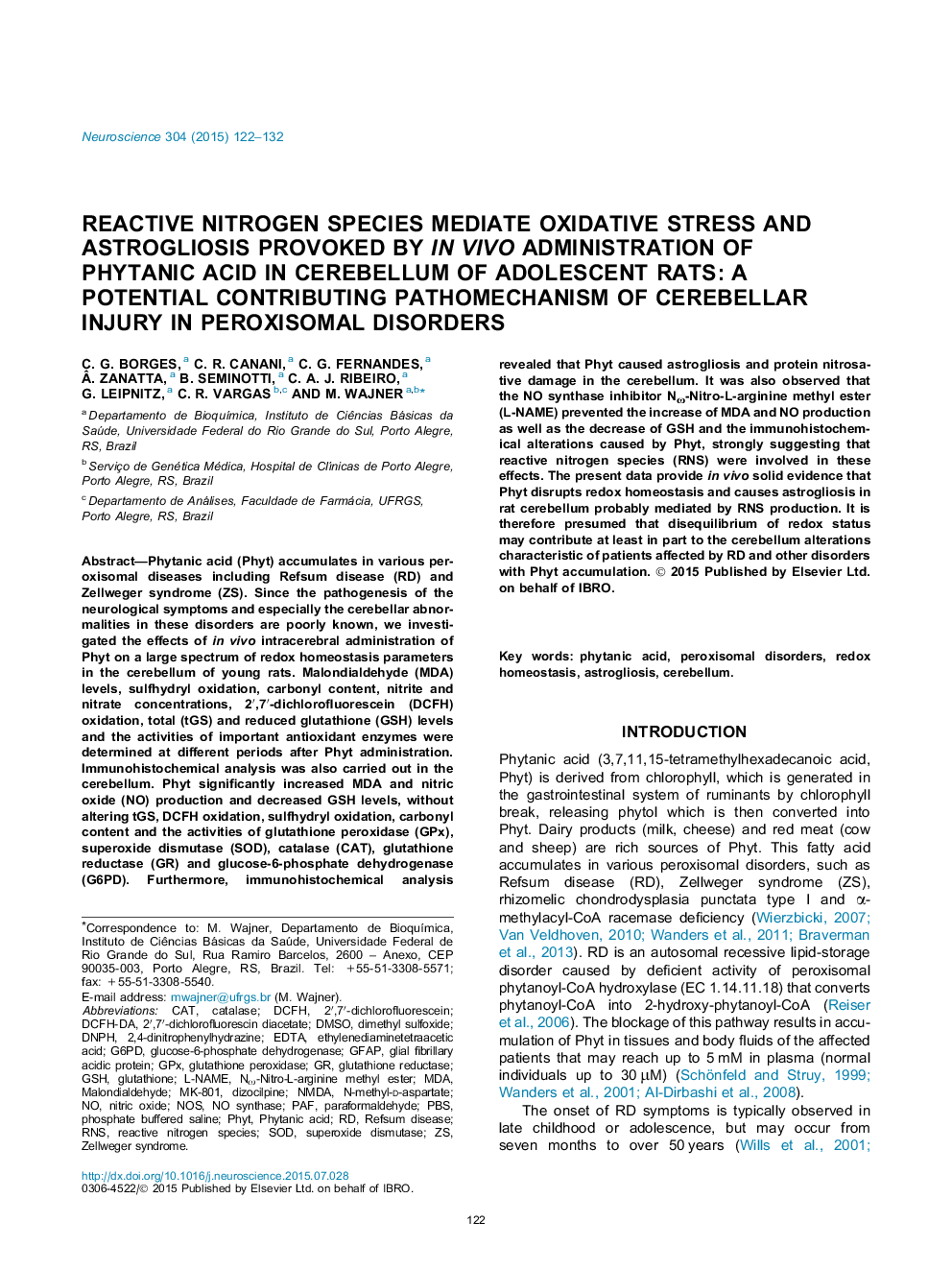| کد مقاله | کد نشریه | سال انتشار | مقاله انگلیسی | نسخه تمام متن |
|---|---|---|---|---|
| 6272419 | 1614772 | 2015 | 11 صفحه PDF | دانلود رایگان |
- Phytanic acid (Phyt) accumulates in various peroxisomal disorders with cerebellar alterations.
- Phyt in vivo administration dysregulates redox homeostasis in the cerebellum through RNS production.
- Phyt in vivo administration causes astrogliosis and nitrosative damage in the cerebellum.
- Blockage of RNS production prevents biochemical and histochemical effects provoked by Phyt in the cerebellum.
- Cerebellar symptoms and abnormalities in peroxisomal disorders may be due to increased Phyt levels.
Phytanic acid (Phyt) accumulates in various peroxisomal diseases including Refsum disease (RD) and Zellweger syndrome (ZS). Since the pathogenesis of the neurological symptoms and especially the cerebellar abnormalities in these disorders are poorly known, we investigated the effects of in vivo intracerebral administration of Phyt on a large spectrum of redox homeostasis parameters in the cerebellum of young rats. Malondialdehyde (MDA) levels, sulfhydryl oxidation, carbonyl content, nitrite and nitrate concentrations, 2â²,7â²-dichlorofluorescein (DCFH) oxidation, total (tGS) and reduced glutathione (GSH) levels and the activities of important antioxidant enzymes were determined at different periods after Phyt administration. Immunohistochemical analysis was also carried out in the cerebellum. Phyt significantly increased MDA and nitric oxide (NO) production and decreased GSH levels, without altering tGS, DCFH oxidation, sulfhydryl oxidation, carbonyl content and the activities of glutathione peroxidase (GPx), superoxide dismutase (SOD), catalase (CAT), glutathione reductase (GR) and glucose-6-phosphate dehydrogenase (G6PD). Furthermore, immunohistochemical analysis revealed that Phyt caused astrogliosis and protein nitrosative damage in the cerebellum. It was also observed that the NO synthase inhibitor NÏ-Nitro-L-arginine methyl ester (L-NAME) prevented the increase of MDA and NO production as well as the decrease of GSH and the immunohistochemical alterations caused by Phyt, strongly suggesting that reactive nitrogen species (RNS) were involved in these effects. The present data provide in vivo solid evidence that Phyt disrupts redox homeostasis and causes astrogliosis in rat cerebellum probably mediated by RNS production. It is therefore presumed that disequilibrium of redox status may contribute at least in part to the cerebellum alterations characteristic of patients affected by RD and other disorders with Phyt accumulation.
Journal: Neuroscience - Volume 304, 24 September 2015, Pages 122-132
